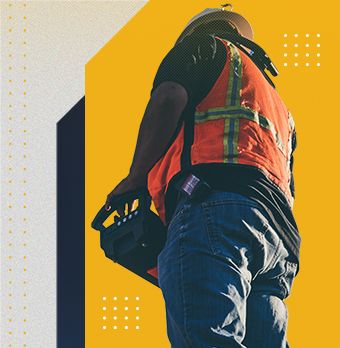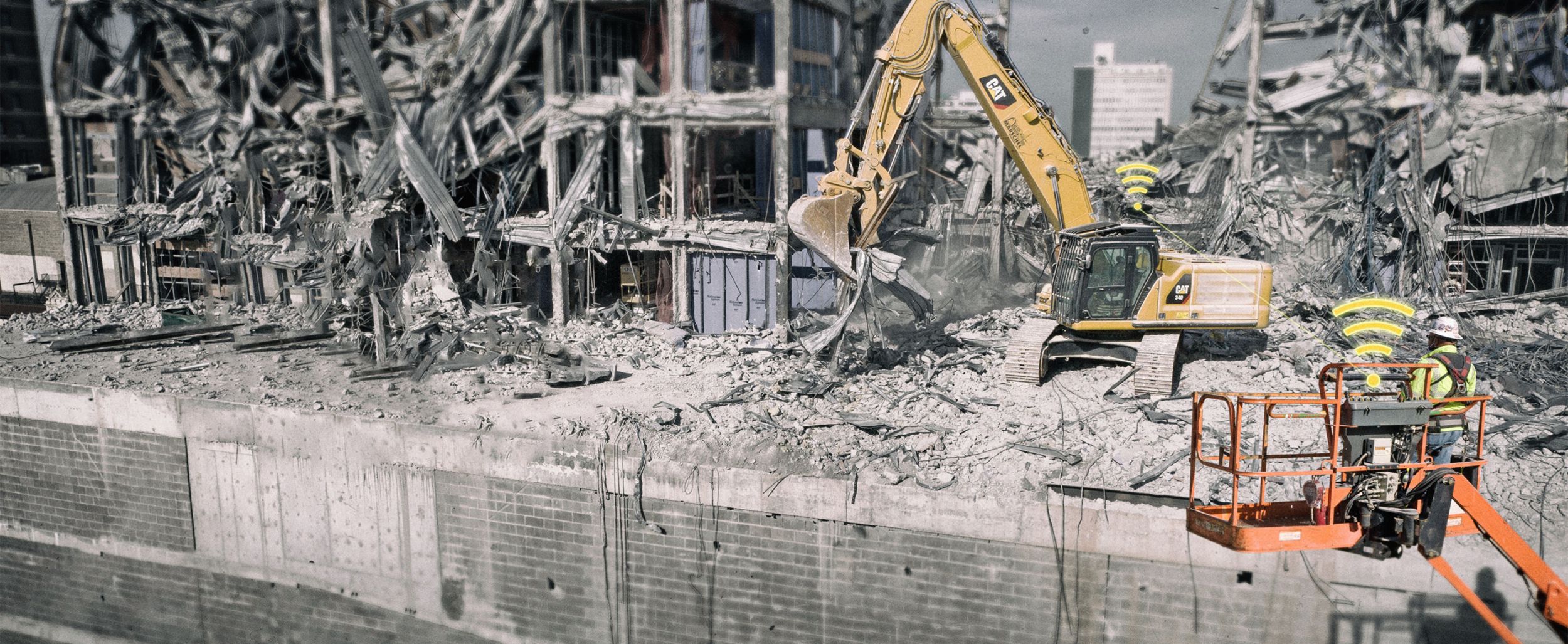

Sign In
Welcome! Sign In to personalize your Cat.com experience
If you already have an existing account with another Cat App, you can use the same account to sign in here
Register Now
One Account. All of Cat.
Your Caterpillar account is the single account you use to log in to select services and applications we offer. Shop for parts and machines online, manage your fleet, go mobile, and more.
Account Information
Site Settings
Security
Tech watch
Best Jobs For Remote & Autonomous Construction Equipment Operators
Where will remote control and semi-autonomous construction equipment ultimately be most useful? With the development of these emerging technologies, here's where we think they'll work best.
Estimated read time: 5 minutes
Dull, Dirty & Dangerous - Heavy Construction Equipment
As the industry continues its drive to produce autonomous heavy equipment, it’s worth taking a step back from wonders of the technology to consider a couple of very important questions:
- Where can remote control and semi-autonomous equipment be most successfully applied on construction jobsites?
- And where will they deliver the most value for construction contractors?
The answers to these questions can mostly be boiled down to three words: Dull, Dirty and Dangerous.
A task that can be described by any of these “3 Ds” could be an ideal candidate for autonomous technology that gets the operator out of the cab and into a safer, more comfortable environment.
In some cases, especially where two or more of the “3 Ds” are in play, the application may be ideally suited for fully autonomous equipment — machines that require no operator guidance at all.
“Where will remote control and semi-autonomous equipment be most useful? And where will it deliver the most value for construction contractors?”
Creating Heavy Equipment Operator Jobs
Emerging remote equipment and semi-autonomous construction technologies will ultimately help to turn those less-than-desirable jobs into safer and more engaging work. That will help to address a persistent problem within the construction industry: the ongoing and worldwide shortage of qualified equipment operators.
Contractors will tell you that it’s very difficult to find, attract and retain people who are good at operating heavy equipment…or who even want to learn how. Long-distance remote control, however, will ultimately bring in new hires who are more willing to turn a job in the construction industry into a long-term career.
How? Comfort and variety are two big factors. Instead of requiring operators to bounce around on the same machine and job site for 10-12 hours a day, tomorrow’s construction jobs will look very different:
- Equipment operators will mostly work remotely, from a comfortable office environment.
- They’ll act more as Heavy Equipment Systems Managers, directing multiple machines, possibly on more than one jobsite during the course of the day.
With multiple video feeds, on-board sensor feedback and tactile controls, construction work will potentially appeal to both the video game generation and older workers who may no longer have the stamina (or desire) for demanding on-site work.
Let’s take a closer look at some real-world applications that fall under the “3 Ds” — Dull, Dirty and Dangerous — to see what kind of automated construction equipment may deliver a better work experience for the operator, along with real value for the contractor.
Taking The Boredom Out of Compaction
Soil compaction certainly fits into the “Dull” task category. A compactor’s job is to go over the same patch of ground again and again. The compactor must maintain a set path with predetermine overlaps between passes to deliver consistently compacted soil.
For operators, the shift-long repetition of the job can quickly tax their concentration. For an autonomous machine, however, it's an ideal application:
- An autonomous machine will precisely follow the compaction plan, hour after hour.
- It can be mapped out in advance on a digital site plan, or site personnel can simply identify a number of GPS waypoints to set compaction boundaries.
- These waypoints might be set by another machine, which can simply touch a point on the ground to record and transmit GPS coordinates to the compactor.
One of the technologies Caterpillar is working on is a lead/follow system that pairs an autonomous soil compactor with a manned or remotely controlled dozer. Once the dozer has finished a section of grade, the operator triggers the compactor to begin work on that section.
The operator can now move on to grade the next section of the site while the compactor goes about its business. The only time the dozer operator needs to attend to the compactor is if it calls for assistance.
Handling A Dusty Fly-Ash Application
There are a number of jobs that fall into the “Dirty” category, but one of the dirtiest jobs ever has to be cleaning out fly ash from under an electric power plant boiler. It has all the elements of an application nightmare:
- A loader operator has to go into a dark, interior space to scoop out the fly ash, which then is used in cement plants.
- The dust is so fine that the job can't begin for a week after the ash is dropped from the boiler.
- Once the dust has settled, operators have to work in a sealed, pressurized cab to keep the dust out.
- They must maintain contact at all times with safety personnel outside of the work area.
The benefits of keeping the operator out of the cab in this situation are obvious. Working from a comfortable, clean, indoor operator station that may be miles away would make the job much safer and easier.
That brings up another “D” — Distance. Today’s data communication technology enables an operator to run a machine remotely from virtually anywhere in the world. It eliminates long commutes to remote worksites, lets employees live wherever they want and lets them switch between machines and/or jobsites in seconds.
Eliminating Barge Terminal Dangers
Distance plays a role in the last application we’ll look at, but that’s only part of the story.
Associated Terminals, a barge terminal management company, has a number of unloading terminals stretched along 120 miles of the Mississippi riverbank. By locating a remote operator station in a central location, their equipment operators don't have to travel up and down the river between terminals. The biggest driver in the company’s move to remotely controlled equipment, however, was operator safety.
The application involves lowering compact wheel loaders, dozers and excavators into the holds of huge river barges. The operator's task is to gather loose material together so gantry cranes can load it out. It’s a job that stacks a variety of dangers one on top of the other.
- Simply boarding a barge anchored on a moving current comes with risks of its own, including drowning.
- Once aboard, operators descend a gantry some three stories down into the hold — a situation ripe for injuries from trips and falls.
- Barge holds are deep, wet and dark. They can also be unbearably hot in the summer and frigidly cold in the winter, even in the deep south.
Using remotely controlled equipment and placing operators in a climate-controlled environment miles away, provides an ideal solution.
“The biggest driver in the company’s move to remotely controlled equipment was operator safety.”
Multiple Payoffs
The bottom-line benefits of these three applications are somewhat hard to measure. The goal behind Cat® remote control and autonomous equipment is to make it at least as productive as manned machines, if not more so.
However, there are other payoffs beyond production efficiencies. In the case of autonomous compaction, the primary benefit is consistent quality. Because an autonomous machine never gets bored or strays from its assigned path, you get consistent compaction across the entire work area.
In the case of the fly ash and barge terminal applications, the payoff is in operator safety and convenience. For the barge application in particular, operators can also easily move from site to site. They’ll spend less time waiting for the gantry crane to unload the bulk of the material. When one site is ready to go, they can switch locations and machines without leaving their universal operator station.
Eliminating the “3 Ds” — dull, dirty and dangerous jobs — offers cascading benefits.
- Greater operator comfort and safety results in potentially easier recruitment and employee retention.
- It enables operators to run equipment where site issues (such as having to climb stairs or work in dusty environments) might aggravate past injuries or ongoing heath conditions.
- It prolongs operator careers by helping to prevent long-term debilitation from noise, heavy vibration and dusty conditions.
Best of all, these are not pie-in-the-sky possibilities. The technologies for all three of these applications are either currently under development or have already been put into practice. Look for another Tech Watch dedicated to the barge terminal application coming soon.
In the meantime, begin to consider where it might make sense to apply automated construction equipment on your jobsites. Because reducing the “3 Ds” stands to put more of the best “Ds” — dollars — on to your bottom line.
RELATED STORIES
You’re here to get ideas to grow your business. Read on for machine insights and expert tips and tricks to get more out of every job.
-
Heavy Equipment Operator Shortage & Remote Solutions
Read Dan Hellige, Worldwide Marketing Manager for Construction & Digital Technologies, take on the shortage of heavy equipment operators and the remote control solutions.
Learn More -
Autonomous Construction Equipment: Site Communications
Read Vijay Ramasamy, Chief Engineer of Remote Control & Autonomy Solutions, take on technology in autonomous construction equipment and jobsite communications as they come together.
Learn More -
Cat® Semi-Autonomous Construction Equipment
Building on the success of its autonomous and remote-control equipment for mining, Caterpillar® is now well down the autonomy path for construction equipment. In this article, Joe Forcash of Cat Robotics outlines the development of a semi-autonomous Compact Track Loader (CTL) that was recently showcased for the first time.
Learn More -
Remote Control Demolition Equipment
Remotely-controlled demolition equipment maximizes safety by keeping operators out the cab and away from dangerous working conditions.
Learn More





